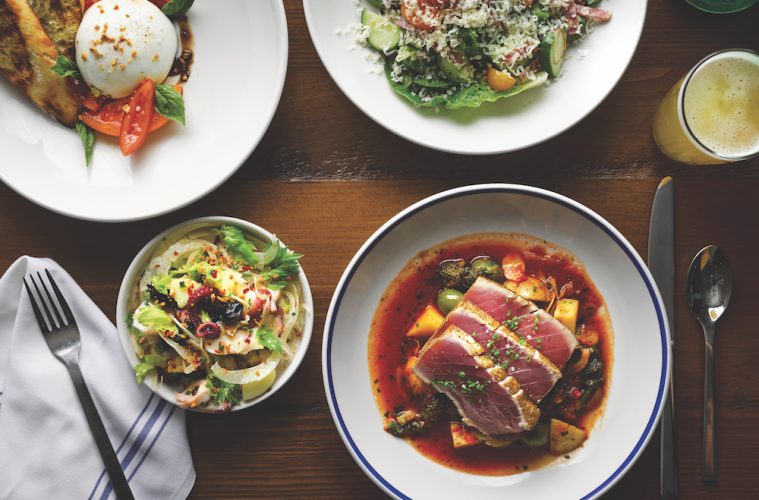Anthony Caturano is wielding a custom 16-inch-long knife over a hulking yellowfin tuna weighing in at more than 200 pounds. The hard-yet-flexible knife was hand-forged for Caturano, chef/owner of Tonno in Gloucester, by Adam Simha, the Cambridge-based expert at MKS Knife, specifically for taking apart whole tuna. His other tool is not nearly so precious, though—a rubber mallet that his prep cook John Armiente brought from home to help drive the knife through the tough skin.
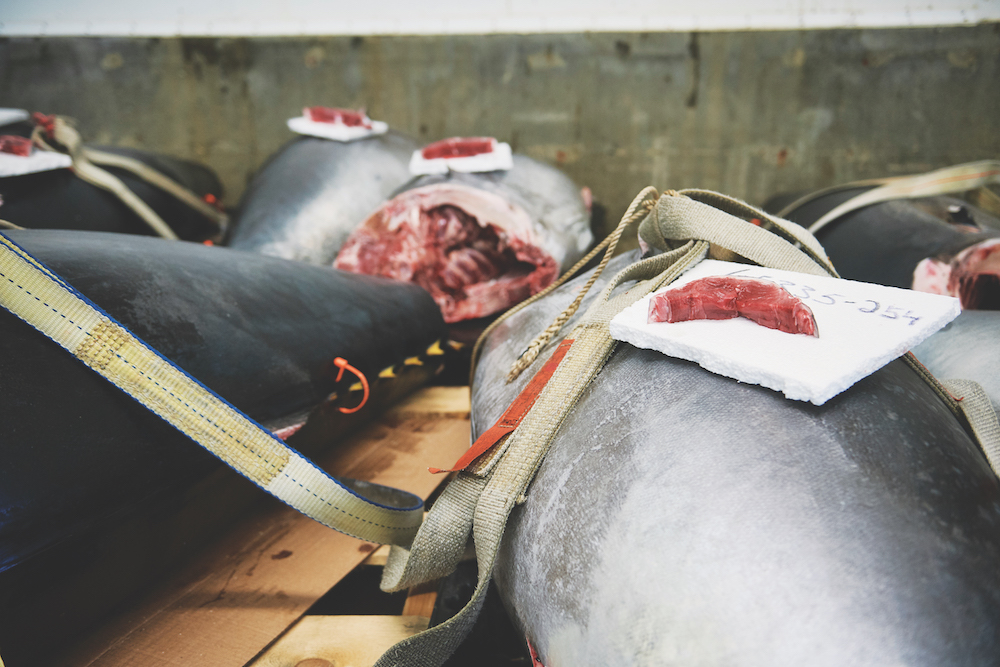
The pair works efficiently; Caturano deftly butchers the fish with surgical precision, while Armiente gently takes each piece—loins, belly, smaller tender bits for tartare, and tougher parts that can be cooked into pasta—and lays it out on butcher paper. In just a few hours, that fish will be on plates at one of Caturano’s two restaurants: Tonno, which opened last year, and Prezza, which has been a legend in Boston’s North End for 17 years.
It’s the second tuna this week that has made the short trip from the dock across the street. During the season, which runs from June through January, or whenever the annual catch limit is reached, Caturano will butcher a massive fish every four days or so to keep up with demand. All told, they will plate about 400 servings a week of tuna at the two restaurants.
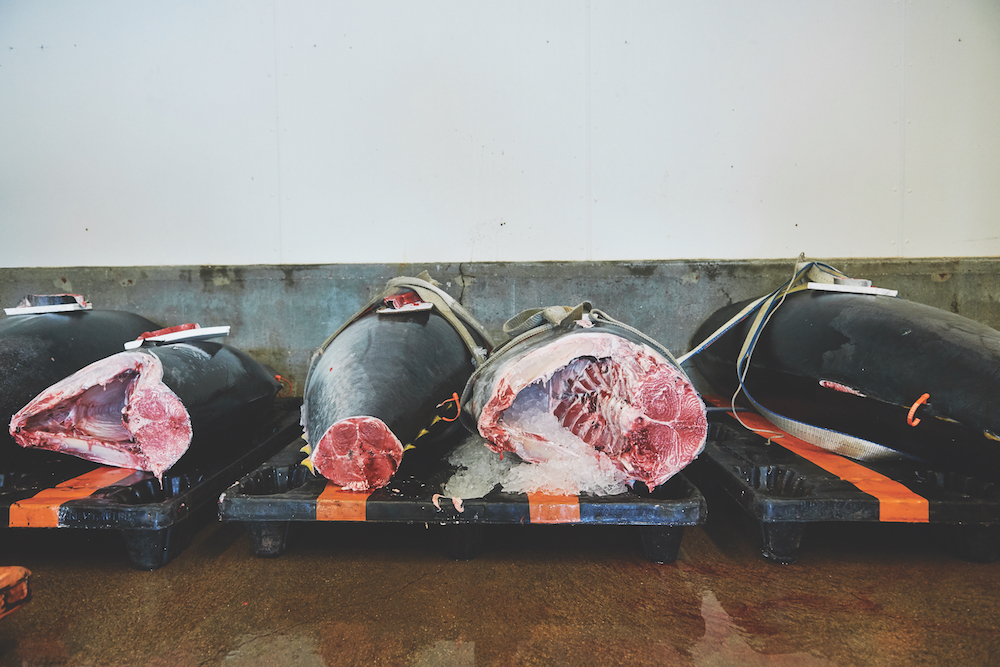
It is safe to say that few places in the world are serving tuna as fresh as Tonno. Caturano purchases his whole fish at Compass Seafood—often featured in the TV show Wicked Tuna—just across the street from the restaurant. In fact, one of the show’s stars, Hot Tuna captain TJ Ott, comes in about twice a week—and only orders tuna.
Especially in Gloucester, it’s easy to get caught up in the hunt. Caturano’s devotion to the fish has been consuming him ever since he caught his first tuna about seven years ago. Tonno is a temple to the beautiful and tasty creature; the name means “tuna” in Italian, and some nights diners may find multiple species on the menu, from bluefin to yellowfin, in preparations from crudo and tartare to grilled steaks and pasta.
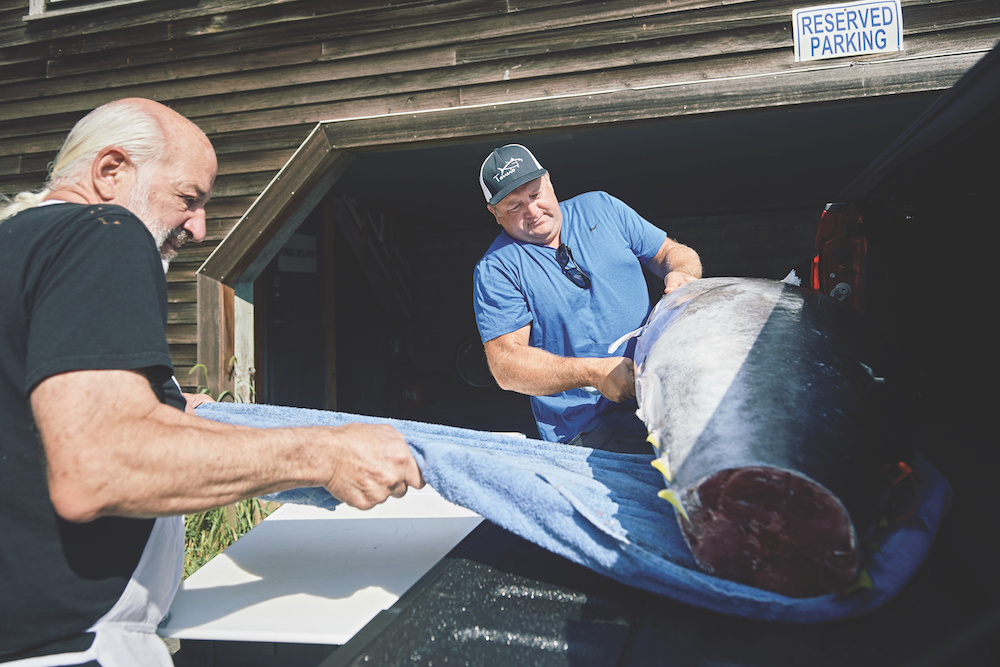
“The first one I caught was the most exciting,” Caturano says, noting that he turned to the sushi experts at Oishii in Boston to teach him to butcher that first beast, and then enjoyed the whole thing with family and friends. “Fishing is pretty boring until it all comes together.”
Then it can be downright intense. Off the coast of New England, the preferred method for catching tuna is by harpoon or rod and reel. This one fish to one fisher method is considered to be the best for sustainability, yet hauling in a 200-pound football-shaped yellowfin, whose streamlined body can travel up to 40 miles per hour, takes strength and skill.
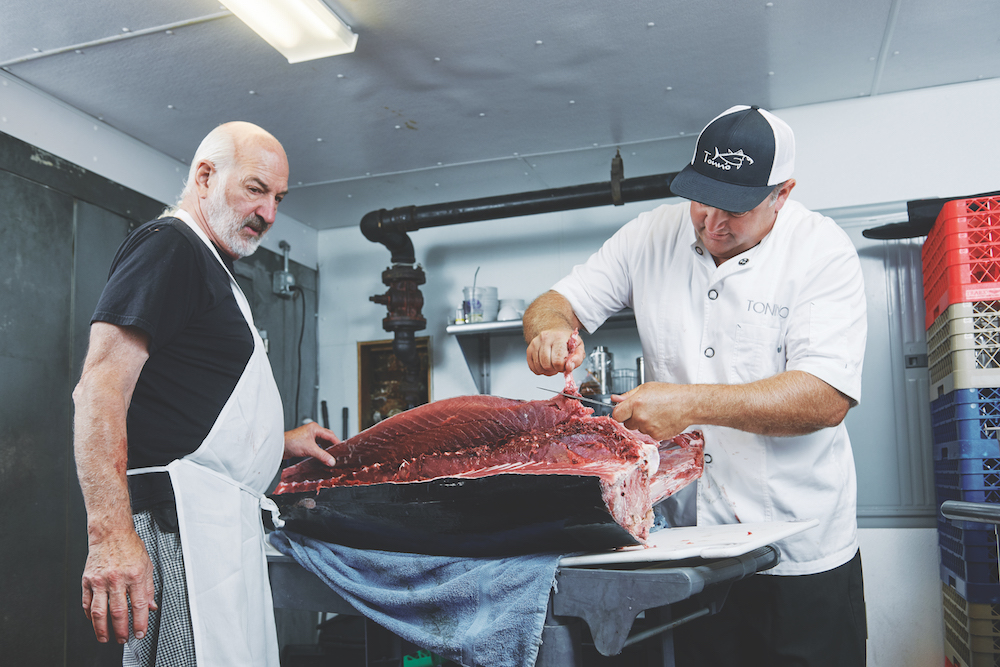
Caturano used to be more of a hunter, but the attraction of wrestling a smart, fast fish with a rod and reel got him hooked, so to speak, and he enjoys everything from the drama of the chase to the serenity of the sea. “The scenery is beautiful, watching the sun rise and the moon set,” he says. “I’ve seen 40-foot whales jumping next to my boat.”
With his Gloucester restaurant a stone’s throw from the harbor, Caturano can slip out to fish for just a few hours, maybe with his dad and his nephew, and then return to work. But while the chef does reel in some big tuna himself, he can’t just toss them in his truck and serve them at his restaurants. Strict regulations mean that Caturano has to sell his fish to a licensed dealer, which reports to the agency responsible for monitoring quotas, and then buy it back—or buy a different one, depending on his plans in the kitchen.
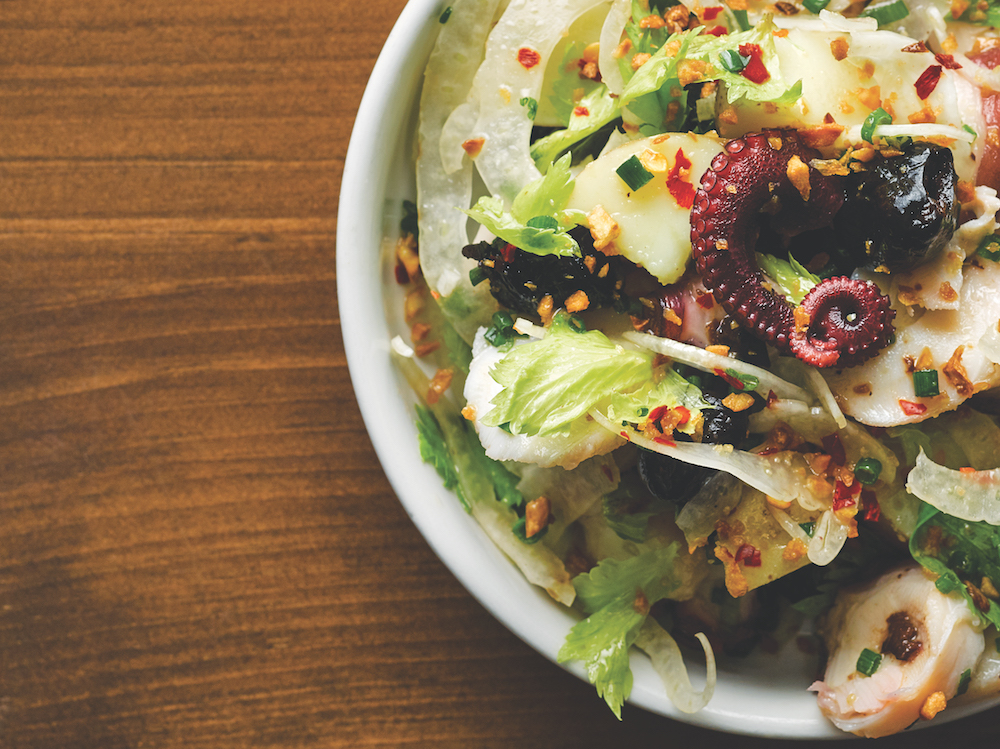
And his plans are exciting for diners. Because the chef is butchering the fish whole himself, he has the opportunity to serve everything from generous portions of crudo, made of that glistening belly marbled with fat, to a spicy slow-cooked pasta sauce.
“Tuna is such a versatile fish,” Caturano says, noting that it easily pairs with whatever is local and in season. The Grilled Tonno Steak is a menu staple whose flavors are easily adapted to the season, from heirloom tomatoes in the summer to broccoli rabe in the fall. In the chef’s capable hands, the perfectly medium rare loin steak is always the star—enhanced with, say, a fennel rub, braised rabe, olives, potato, and a fennel and lobster reduction, and served over a square of grilled polenta. The sheer freshness of the fish and Caturano’s creative combinations make it easy to forever abandon the tired Asian preparation encrusted with sesame seeds and bathed in soy sauce.
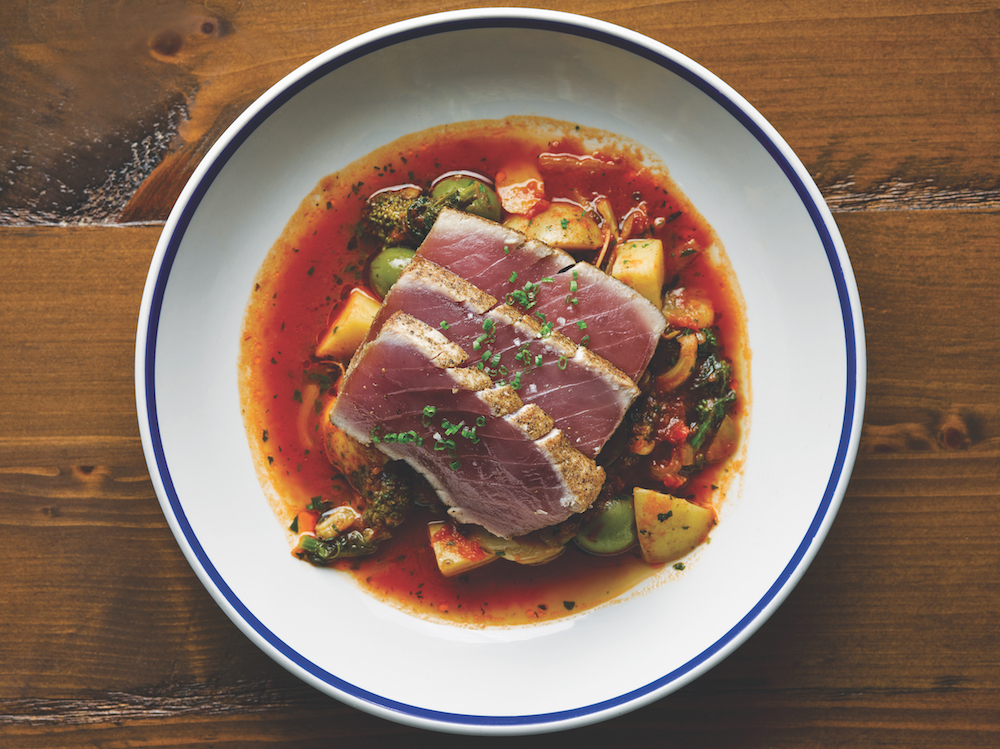
Lucky for diners, staying true to his Italian roots while paying homage to a magnificent fish is something Caturano plans to do for a long time. “Tuna fishing is something you can do for life.… I see things a lot of people don’t get to see, out where the whales are feeding.”
Tonno
2 Main St., Gloucester
978-879-4795

